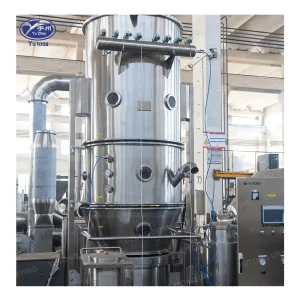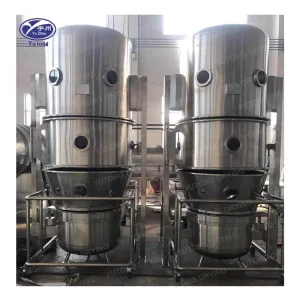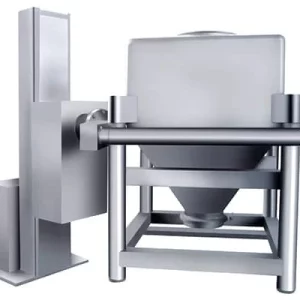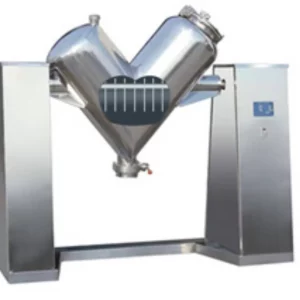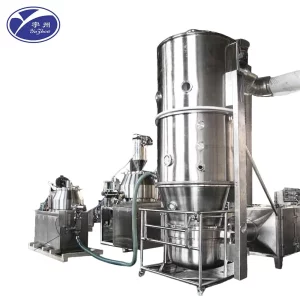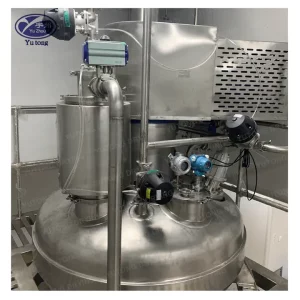The fluidized bed dryer is a highly efficient piece of equipment widely used in various industries for drying a diverse range of materials. Understanding its principle and working mechanism is essential to appreciate its significance and applications.
Principle of Fluidized Bed Drying
The principle of fluidized bed drying is based on the phenomenon of fluidization. Fluidization occurs when a gas (usually air) is passed through a bed of solid particles at a high enough velocity. At a certain gas velocity, the drag force exerted by the gas on the particles overcomes the force of gravity, and the particles start to move freely, creating a fluid-like state. This fluid-like behavior allows for excellent heat and mass transfer between the gas and the solid particles.
In a fluidized bed dryer, the material to be dried is placed on a perforated plate or a bed within a drying chamber. As the hot gas passes through the perforations, it lifts and suspends the particles of the material, creating a fluidized bed. The heat from the hot gas is transferred to the material, causing the moisture to evaporate. The evaporated moisture is carried away by the gas stream, leaving behind the dried material.
Working of Fluidized Bed Dryer
The working of a fluidized bed dryer can be divided into several stages:
1. Material Loading: The material to be dried is loaded into the drying chamber through a suitable inlet. The material can be in the form of powders, granules, flakes, or other solid forms.
2. Gas Distribution: The hot gas is distributed evenly throughout the drying chamber by a gas distribution system. This system typically consists of perforated plates or distributors that ensure a uniform flow of gas across the bed of material.
3. Fluidization: As the hot gas passes through the bed of material, it reaches a velocity that causes the material to fluidize. The fluidized bed is characterized by a uniform movement and mixing of the particles, which enhances the heat and mass transfer.
4. Drying Process: The heat from the hot gas is transferred to the material, causing the moisture to evaporate. The evaporated moisture is carried away by the gas stream. The drying process continues until the desired moisture content is achieved.
5. Material Discharge: Once the drying is complete, the dried material is discharged from the drying chamber through a suitable outlet. The discharge can be continuous or batch-wise, depending on the type of fluidized bed dryer.
Components of a Fluidized Bed Dryer
A typical fluidized bed dryer consists of several key components:
1. Drying Chamber: This is the main enclosure where the drying process takes place. It is usually made of stainless steel or other suitable materials to withstand the operating conditions and prevent corrosion.
2. Gas Distribution System: As mentioned earlier, this system is responsible for evenly distributing the hot gas throughout the drying chamber to ensure uniform fluidization and drying.
3. Heating System: The heating system provides the necessary heat to the gas. It can be in the form of steam coils, hot air generators, or electric heaters, depending on the specific requirements of the drying process.
4. Product Inlet and Outlet: These are the points where the material to be dried is introduced into the dryer and the dried product is removed.
5. Control System: The control system monitors and regulates the various parameters of the drying process, such as temperature, gas flow rate, and drying time. It may include sensors, controllers, and valves.
Advantages of Fluidized Bed Drying
Fluidized bed drying offers several advantages over traditional drying methods:
1. Rapid Drying: The fluidized bed provides excellent heat and mass transfer, resulting in rapid drying times. This is particularly beneficial for materials that are sensitive to heat or have a high moisture content.
2. Uniform Drying: The uniform movement and mixing of the particles in the fluidized bed ensure uniform drying throughout the material. This helps to prevent over-drying or under-drying and results in a high-quality dried product.
3. Gentle Drying: The gentle handling of the material in the fluidized bed reduces the risk of damage to the particles. This is important for fragile materials or materials that have a specific shape or size.
4. Versatility: Fluidized bed dryers can handle a wide variety of materials, including powders, granules, flakes, and pastes. They can also be used for drying materials with different moisture contents and physical properties.
5. Energy Efficiency: The efficient heat transfer and short drying times of fluidized bed dryers result in lower energy consumption compared to traditional drying methods.
In conclusion, the fluidized bed dryer is a highly effective piece of equipment that operates on the principle of fluidization. By understanding its working mechanism and advantages, industries can make informed decisions about its use for drying various materials. With its ability to provide rapid, uniform, and gentle drying, the fluidized bed dryer is a valuable tool in many industrial processes.

